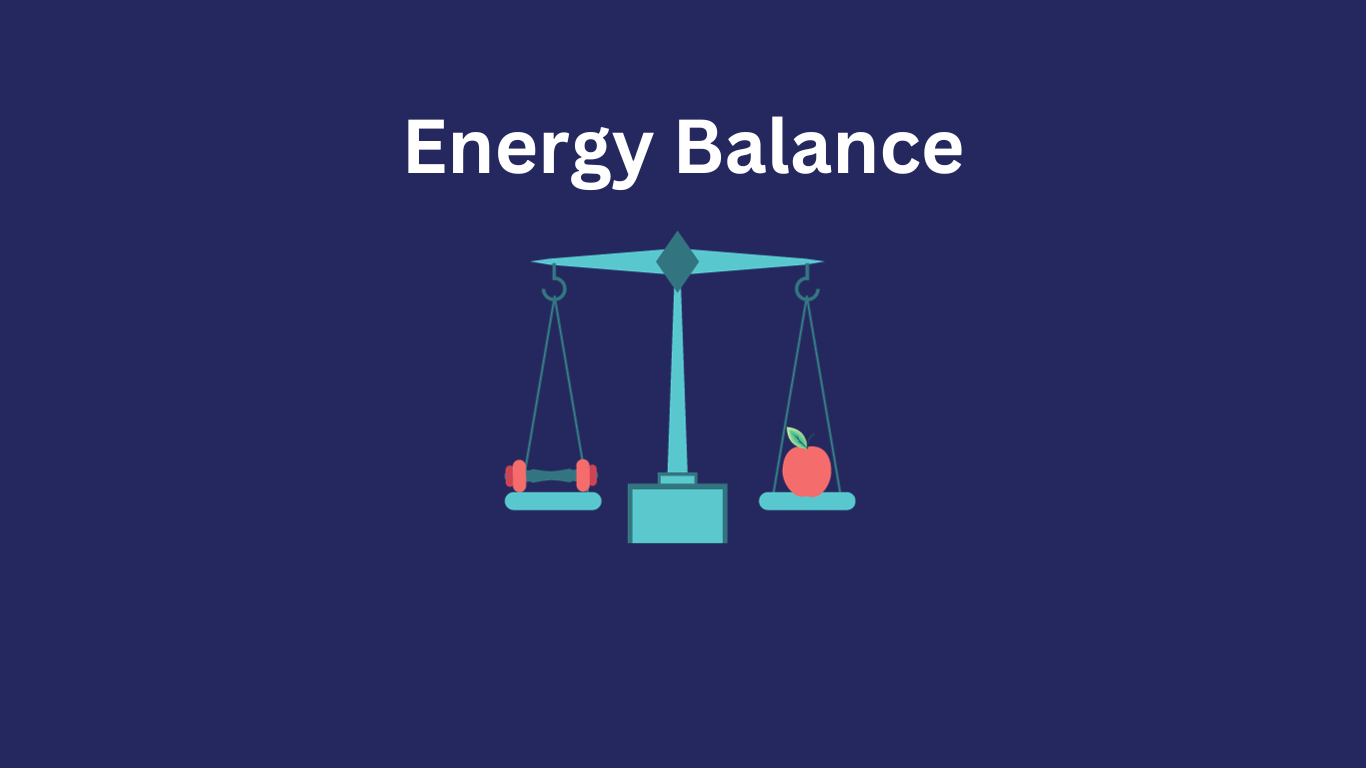
Are you looking to embark on a new diet but feeling overwhelmed with all the conflicting information out there? Well, you're not alone. With so many different approaches to weight loss, it can be hard to know where to start. However, one important factor that often gets overlooked is understanding your BMI and BMR. These two measurements are crucial in helping you create an effective and sustainable diet plan. In this blog post, we'll dive into the energy equation and how you can use BMI and BMR to achieve a balanced and healthy diet. And by the end you will be able to calculate your own dietary intake requirements, understand your body and save money on seeking tailored plans!
Understanding the Concept: Energy Balance, BMI, and BMR
When it comes to weight loss, understanding the concept of energy balance is key. Energy balance refers to the balance between the calories you consume and the calories you burn through physical activity. Your body mass index (BMI) and basal metabolic rate (BMR) are two measurements that help you understand this balance. BMI measures your body fat based on your weight and height, whilst BMR calculates the calories your body needs to perform basic functions at rest. Understanding these concepts is crucial in creating a diet plan that is tailored to your specific needs and goals.
Exploring Body Mass Index (BMI) and Its Role in Diet Preparation
Body Mass Index (BMI) is an important measurement that plays a crucial role in diet preparation. It is a tool used to assess the amount of body fat based on an individual's weight and height. Understanding your BMI can provide valuable insights into your current health status and help determine your weight loss goals.
BMI is calculated by dividing your weight in kilograms by the square of your height in metres. The resulting number is then compared to a BMI chart to determine whether you fall into the underweight, normal weight, overweight, or obese category. By knowing your BMI, you can have a better understanding of where you currently stand in terms of your weight and make informed decisions about your diet.
When it comes to diet preparation, your BMI can guide you in setting realistic goals and creating a calorie deficit. It can help you determine the ideal weight range for your body type and provide a starting point for your weight loss journey. By tracking your BMI over time, you can monitor your progress and adjust your diet and exercise routine accordingly.
However, it's important to remember that BMI is not the only factor to consider when preparing for a diet. Other factors such as body composition, muscle mass, and overall health should also be taken into account.
Example of how to calculate BMI
Height 5 feet 8 inches converted to metres is 1.72
Weight = 75kg
75 divided by 1.72 x 1.72= 25.3
Now compare results below
source: https://www.health.gov.au/topics/overweight-and-obesity/bmi-and-waist
|
BMI (adults) |
Classification |
|
Less than 18.5 |
Underweight |
|
18.5 to 24.9 |
Healthy weight |
|
25 to 29.9 |
Overweight but not obese |
|
30 to 34.9 |
Obese class I |
|
35 to 39.9 |
Obese class II |
|
40 or more |
Obese class III |
Getting to Know Your Basal Metabolic Rate (BMR)
Now let's delve into the fascinating world of your Basal Metabolic Rate (BMR). This is the number of calories your body needs to perform basic functions whilst at rest. Knowing your BMR can be a game-changer when it comes to designing your diet plan. By understanding your BMR, you can tailor your calorie intake to ensure that you're giving your body the fuel it needs without overdoing it. So, let's get to know your BMR and take your diet planning to the next level.
BMR Formula
For men: BMR = 10 x weight (kg) + 6.25 x height (cm) – 5 x age (years) + 5
For women: BMR = 10 x weight (kg) + 6.25 x height (cm) – 5 x age (years) – 161
Lets use the previous example figures and say the individual is Female at 40 years of age.
10 x 75 = 750 + 6.25 x 172 = 1825 - 5 x 40 = 1625 - 161 = 1464 kcal
So our final result is 1464 calories at a daily intake... but remember this is the bare minimum as BMR indicates that this is the amount of calories needed for our body to sustain life in a resting state. Which leads us to the next part of our lesson (sorry if this has turned into a maths lesson) another formula which is the harris-benedict formula which takes in account for our activity level through out the day through a series of questions.
Before we continue i want us to track back to understanding the value of the calories we consume and why it is important.
Food is more than just calories, and calories are more than just nutrients. They are units of Energy, we use energy every second of our lives, walking, brushing teeth, sleeping, even when we are eating (creating energy), requires energy! When we breakdown and digest food, we want food to repair, grow, and maintain a healthy physiology. We can accomplish this by choosing nutrient dense meals that allow us to synthesise these nutrients to our whole body.
Harris-Benedict Equation
Harris- Benedict equation is added after BMR to calculate the amount of energy (in the form of calories) needed influenced by daily activity level.
Equation - BMR (calories) x Activity level
Sedentary (little or no exercise): calories = BMR × 1.2;
Lightly active (light exercise/sports 1-3 days/week): calories = BMR × 1.375;
Moderately active (moderate exercise/sports 3-5 days/week): calories = BMR × 1.55;
Very active (hard exercise/sports 6-7 days a week): calories = BMR × 1.725;
If you are extra active (very hard exercise/sports & a physical job): calories = BMR × 1.9.
We are going to continue to use the example figures from previous.
Equation, 1464 x 1.725 (moderately active) = 2525.4 calories.
Now that we have our results from BMR we can understand a lot more about the individual. This person works out regularly therefore requires more energy (calories) for repair. When we look at BMI from step one this lady was categorised as overweight, because she works out we can assume that there is a higher percentage of muscle on her, we have to take in account for muscle weighs more than fat lb for lb.
You have now learned how to calculate the amount of energy required to sustain a healthy diet associated for your body type and activity level. My next suggestion to you would be to make a log of what you eat daily and calculate the amount of calories you are consuming to compare results and have an overview of energy consumption.
I hope this blog post has given you an understanding of how our body requires the right amount of energy in order to maintain a healthy balanced diet. If your results come out that you are still eating less than what you require and are still putting on weight, then this could mean a few things:
1. The food you are eating is not nutrient dense enough.
2. You are still burning stored fat.
3. Timing of eating.
4. Metabolic disease. (blog post coming soon)
5. Drug nutrient interactions. (blog post coming soon)
In the upcoming blog posts we will look at three diets that i believe encourage a healthy balanced diet.
I hope you enjoyed toady's ready and have a brilliant day wherever you are!
